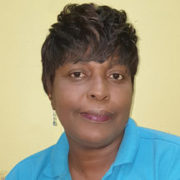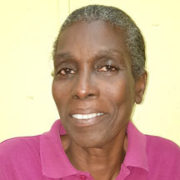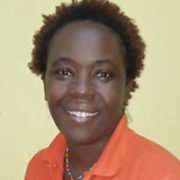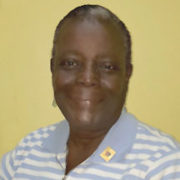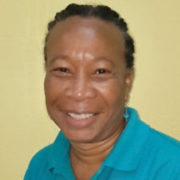History
INTERNATIONAL ROOTS
In 1924, Mrs. M.L. Matthews, a member of the Women’s Engineering Society (WES) council, a charity and a professional network of women engineers, scientists and technologists based in the United Kingdom, conceived the idea of “a scheme popularising the domestic use of electricity”. The idea was rejected by two engineering organisations before she presented it to the WES. The WES council accepted the idea and on November 12 1924, the Women’s Electrical Association (WEA) was inaugurated at a special meeting. It held its first council meeting on December 16 and appointed Dame Caroline Haslett its director. On April 30 1925, to avoid confusion with the initials of the Workers’ Educational Association, the name was changed to the Electrical Association for Women (EAW).
The EAW grew rapidly and branches were soon established in Glasgow, Birmingham and Manchester. Branch activities were designed to educate women about all aspects of electrical technology and its domestic use.
Its stated aims were “to make provision for the education of, and to give instruction and training to women and others [about] electrical energy … domestic science, hygiene and social welfare; to promote, encourage and further education and research relating to the use of electrical energy in connection with matters of particular interest to women … [and] to examine persons as to their knowledge with respect to electrical energy and [its] use … and domestic science”. Electrical safety was another important facet of the programme.
As the message of the EAW spread, similar associations were established overseas. They included:
The Netherlands -1932
Australia -1934
New Zealand -1960
Trinidad and Tobago – 1961
T&TEC’s EAW
The Electrical Association for Women was introduced to Trinidad and Tobago by the then Public Relations Officer of T&TEC, Mrs. Louise Buxo, who learned of the association while on a visit to the United Kingdom.
It is interesting to note that the inauguration of the EAW took place in 1961, the same year in which T&TEC assumed full responsibility for the distribution, transmission and generation of electricity in Trinidad and Tobago.
The EAW Trinidad and Tobago operated with the same objectives as the international body and carried out training courses in appliance repair, house wiring and domestic crafts; lectures and outreach programmes to educate members and customers. The Commission’s staff acts as facilitators at EAW’s public information sessions on electricity safety and conservation and as liaisons for planning and executing various events. It also provides a home for monthly meetings and public demonstrations
By the mid-1980s the international EAWs were no longer attracting new members and were voluntarily dissolved in 1986. The EAW Trinidad and Tobago continued its operations, as the demand for its programmes still exist.
VISION, MISSION, OBJECTIVES
Vision Statement
The Trinidad and Tobago Electricity Commission Electrical Association for Women will move forward with global changes and advancements in electricity and energy technology for the greater benefit of women.
Mission Statement
The Trinidad and Tobago Electricity Commission Electrical Association for Women will be recognised as the NGO for training, development and advocacy for women on electricity related matters.
Objectives
- To encourage the exchange of information on the safe use of electricity in all spheres of life.
- To organise lectures, training programmes and demonstrations on the efficient use of electricity, to empower consumers to manage their consumption economically.
- To build relationships with other Associations and Societies in work that may be mutually beneficial.
- To encourage the exchange of information and ideas for the promotion of joint action among women for the adoption of safe and efficient electricity practices.
- To provide a platform for the expression of women’s points of view on advances in electrical technology and relevant public policy.
STRUCTURE
Central Executive Committee
The EAW comprises a Central Executive committee (CEC) and nine Branches. The CEC is the governing body for the Branches. It consists of elected officers holding the positions of President, Vice President, Secretary, Assistant Secretary, Treasurer, Assistant Treasurer and Public Relations Officer. Each Branch nominates one Committee member to the CEC.
The following persons are also appointed members of the Central Executive:
- The Chairperson or Vice Chairperson of each Branch.
- The Secretary or Assistant Secretary of each Branch
- The Treasurer or Assistant Treasurer of each Branch
- The Immediate Past President of the Association
Term of office
Officers and Committee Members hold office for one year and may also offer themselves for re-election. However, the President shall not hold the office for more than three consecutive years and the Secretary and Treasurer shall not hold office for more than two consecutive years.
Branches
There are nine branches of the EAW throughout Trinidad and Tobago. Each branch is made up of an Executive Committee which is responsible for the conduct of the business of the branch in accordance with the EAW’s constitution and Branch rules.
The Executive Committee consists of a Chairperson, Vice Chairperson, Secretary, Assistant Secretary, Treasurer, Assistant Treasurer and four Committee Members.
Election of officers takes place at the Annual General Meeting of the Branch. The term of office is for one (1) year and officers may offer themselves for re-election. However, the Chairperson, Secretary and Treasurer shall not hold the same office for more than two years.
The Branches of the EAW are located in the following areas:
- Port of Spain
- San Fernando
- Tobago
- Arima
- Siparia
- Point Fortin
- Sangre Grande
- Cumana/Toco
- Chaguanas
Central Executive Committee 2018 – 2019
Cherry Ann Nichols
President
Julia Andrews
Vice President
Maureen Taylor-Gordon
Secretary
Monica Nelson
Assistant Secretary
Grace Mc Ewen
Public Relations Officer
Jenny Moren-Rawle
Treasurer
Immediate-past Central Executive Committee
Officers
Julia Andrews – President
Cherry Ann Nichols – Vice President
Maureen Taylor Gordon – Secretary
Vanessa Reefer – Assistant Secretary
Jenny Moren-Rawle – Treasurer
Grace McEwen – Public Relations Officer
Members
Carolyn Londgon-Bethel – Point Fortin Branch
Daisy Moses – Sangre Grande Branch
Erma Hector – Chaguanas Branch
Glenda Johnson – Tobago Branch
Andrea Hall-John – Arima Branch
Linda Garcia – San Fernando Branch
Utilda Wharwood – Siparia Branch
Irma Villafana – Port of Spain Branch
Membership
Membership in the EAW is open to all women who agree with the objectives of the Association.
Members are grouped into Branches formed in accordance with the Constitution’s rules for such Branches.
Each member is required to pay a subscription fee of one hundred dollars ($100.00) a year. This fee is subject to review every five (5) years.

